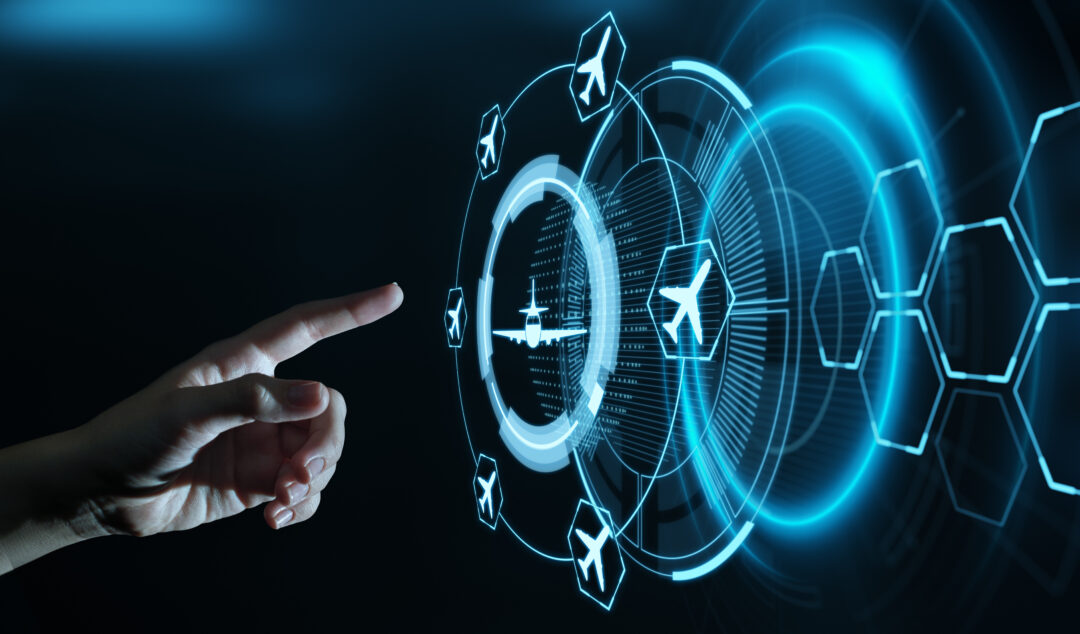Although still in its infancy, edge computing can provide several operational advantages to the aviation sector, according to Amir Hashmi, CEO and founder of zsah managed IT services
Edge computing is a distributed computing model that uses localised networks to bring data storage and processing closer to the devices and applications generating the information – rather than relying on remote data centres and processing infrastructure.
Ideal for applications that require split-second timing or devices and systems that work in physically hard-to-reach or highly sensitive situations, edge computing offers so many benefits to the aviation industry.
Airlines began seriously investing in edge cloud and connected technologies in 2019, and could be investing between $1 million and $10 million per aircraft within the next five years. Considering that the average one-hour delay is estimated to cost an airline $600 per minute, edge computing applications such as proactive and predictive maintenance could save the world’s airlines billions of dollars annually.
Behind the scenes
At the operational level, edge cloud deployments can enable aviation stakeholders to harness the power of localised information gathering and processing to perform lightweight analytics, that informs quick operational decision-making and rapid response. This applies across a range of applications.
Aircraft manufacture and supply chain management
Edge cloud solutions enable the aviation sector to transition from a linear supply model (design, source, make, deliver) to an interconnected digital supply network or DSN. With a typical aircraft consisting of six million parts or more, this approach facilitates input from ecosystem partners and contributors to the manufacturing process.
In a DSN, digital modelling technologies, edge computation, conventional cloud, mobile, and IoT sensors, allow stakeholders to create a virtual mirror of the physical world. These technologies adapt rapidly to changes in product designs and production levels to produce a more agile value chain.
Proactive and predictive maintenance
Edge cloud networks can provide continuous high-bandwidth connectivity between aircraft and the internet. This enables data transmission even in mid-air, with edge computing providing a filter for the most relevant information – reducing overall bandwidth usage. Servers on the ground can then selectively pull data from the edge servers on the aircraft for more detailed, real-time analysis – helping to spot potential problems and advise immediate remedial actions.
This high-bandwidth connectivity can send the information needed to allow airlines to predict components and other failures before their occurrence and empower organisations to take the necessary steps to address these faults.
Systems can generate automatic notifications from the plane to enable ground crews to prepare for repairs at the next landing point. Maintenance teams can more easily manage their parts and resources with access to detailed information (including video and other multimedia input).
Mobility Infrastructure
Edge computing also holds potential for enabling aviation operators to develop a mobility infrastructure that incorporates intelligent connected vehicles within a more extensive transportation network. For this purpose, the edge makes it possible to process crucial information close to its source and use the cloud to support back-end analysis.
Potential applications include improved baggage handling with automated tractors and conveyors, strategies to optimise fuel consumption, and the development of aircraft that can automatically correct their course in response to predictions of bad weather.
Passenger-facing applications
At a time when “customer experience” can be the key to economic success or failure, stakeholders in the aviation sector need to do everything they can to ensure that passengers have a stress-free and enjoyable journey. Here, too, edge computing has several applications to contribute.
Reducing flight delays
By using edge cloud applications to manage the movement and activity of people and parts, airlines can improve the maintenance routines of their aircraft – one of the significant causes of flight delays. For example, when using a network that combines edge computing with mobile and IoT technologies, it’s possible to diagnose airline hardware using sensors. These then alert the nearest maintenance team based on their mobile location and closeness to the plane so that they can issue real-time updates to the departure timetable.
In-flight safety monitoring
Onboard, fitting airline seats with IoT sensors linked to an in-flight edge network enable flight attendants to monitor the seatbelt and safety status of individual passengers to ensure they adhere to the flight crew’s safety recommendations. Monitoring occurs via tablets issued to each flight attendant, reducing their need to walk up and down the aisles physically.
Personalised services
Many airlines currently provide online portals or mobile apps that enable passengers to log their preferences concerning food, drink, and in-flight entertainment – both before a trip and based on information gleaned from their previous journeys.
Integrating this data with seat sensors, tablet technology, and an edge cloud network allows airlines to deliver intensely personalised services to individual passengers. For example, seat-back screens connected to the ecosystem could greet the passenger by name and provide entertainment recommendations based on their music and film taste.
Biometrics
Another emerging technology gaining traction in the aviation sector is biometrics – particularly those based on facial recognition. The individual passenger’s face effectively becomes their digital “passport.” Biometric systems are currently in place at airports worldwide, providing access control and identity management for passengers from check-in to their destination.
Edge computing and mobile facilitate the deployment of biometric systems, typically allowing airports to clip a minimal set of kiosks and scanners to their existing infrastructure and create a local network for data processing and digital identity management.

Related:
How the tech strategy of IATA’s CIO is aiding pandemic recovery in aviation — Pascal Buchner, CIO of the International Air Transport Association (IATA), spoke to Information Age about his IT transformation strategy.
Three things essential to the future of edge computing — Martin Percival, solutions architect at Red Hat, identifies three elements that are essential to the future of edge computing.







